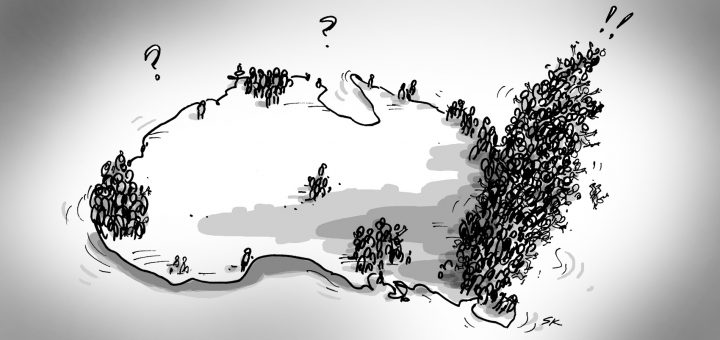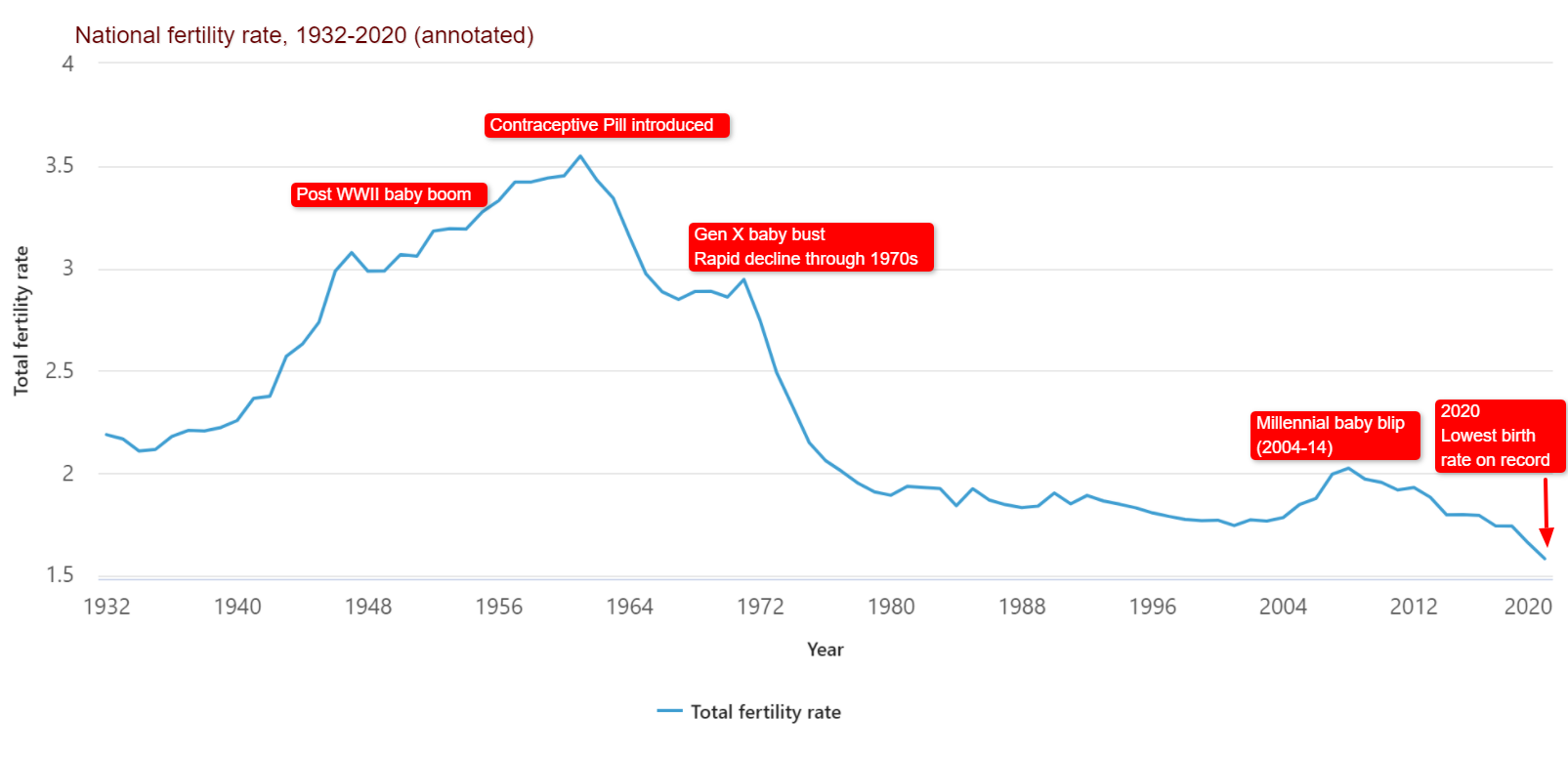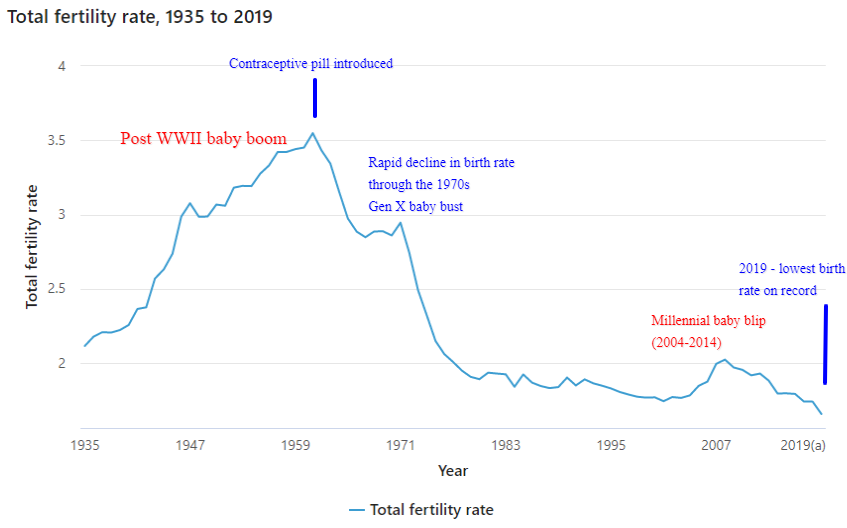In 2022, Australia’s population grew by record numbers – our largest ever recorded increase a calendar year. This was driven largely by a surge in international migration. Glenn breaks down the story by state and territory.
The population of Australia rose to 26,268,359 people in December 2022, according to the latest national, state and territory population figures released by the ABS released last week. This was an increase of 496,800 people in a year, or 1.9% since December 2021. The growth was almost entirely driven by a surge in overseas migration throughout the 2022 calendar year.
This is not only a large increase, it is in fact the largest increase in population ever recorded in a calendar year in Australia. The growth rate of 1.9% is high, but not a record. We had higher growth rates in percentage terms as recently as 2009, and much higher after World War II and way back in the gold rush days, but these were off a smaller population base. The nation has never before added almost half a million people in a year.
It comes just two years after a record low growth rate during the pandemic, when our borders were closed, showing how much of Australia’s population growth depends on migration. We’ve also never before seen more as many net migrants in a year before: 387,000 for the calendar year 2022. It looks like a combination of pent up demand during the pandemic and the tight jobs market driving skilled migration has pushed up migration to record levels. Overseas migration in 2022 made up 78% of the total population growth, the remaining 22% being “natural increase” (births minus deaths).
2022 migration by Australian States and Territories
Here is what the changes look like at the state/territory level.
SOURCE
As you can see, the story varies greatly between states and territories.
- NSW continues to lose migrants interstate – mainly to Queensland – but not at as fast a rate as during the pandemic. Accordingly Queensland’s population growth has moderated a bit, and it’s not the fastest growing state any longer (but still growing rapidly).
- Western Australia is once again the fastest growing state, after a break of about 7 years, with a growth of 2.27%, over 62,000 people for the calendar year.
- Victoria has turned around a population decline during the pandemic to record a 2.1% growth rate, over 137,000 people – driven by the highest overseas migration the state has ever recorded, over 120,00. Victoria is still losing population interstate but at a slower rate than during COVID.
- South Australia continues to grow strongly. Net interstate migration is almost back to neutral, but as with many states it recorded a record overseas migration of almost 24,000 people.
- Tasmania saw high overseas migration from overseas but, after attracting many interstate migrants during the pandemic, has returned to a small interstate migration loss. These factors combine to continued population growth at about 0.5%, consistent with pre-COVID levels, back to being the slowest growing jurisdiction.
Where to access the data
In .id’s Local Government suite (eg. profile.id and economy.id), we show populations for the June quarter each year, because that’s the only data release that’s available for Local Government Areas and other smaller geographic areas. These haven’t changed with this release. The quarterly figures, which include calendar year totals, are only available for states/territories and Australia overall. So the figures for states and territories on .id sites will differ a little from the ones shown here as these are December quarter figures, and we can only compare June quarter with local figures.
The ABS has also revised the past figures from 2017–2021 at the state level with this release. These have been updated in your community profiles state and territory benchmarks, so if you’ve used a state population figure recently, you may notice it’s slightly different now. These numbers in the profile always relate to the June quarter data only.









